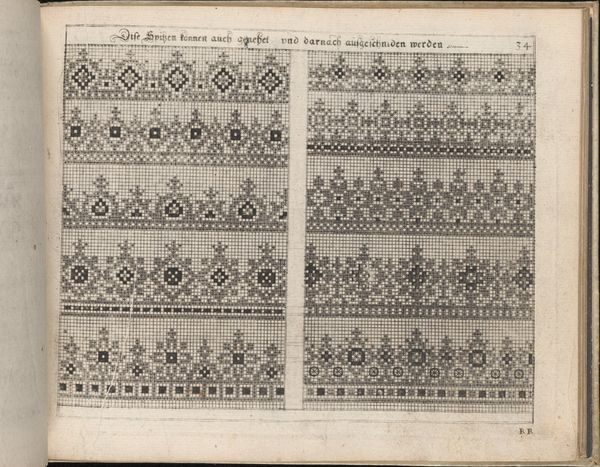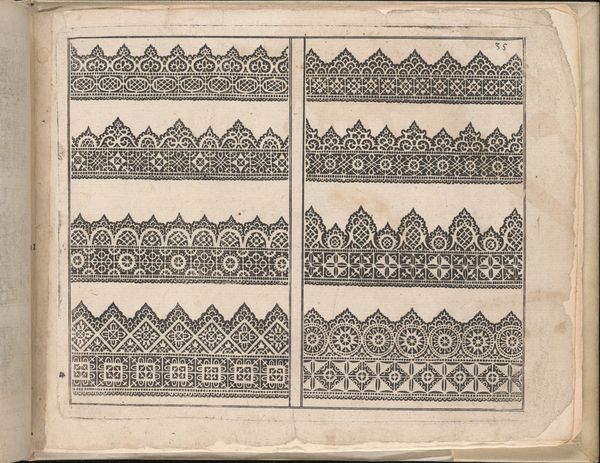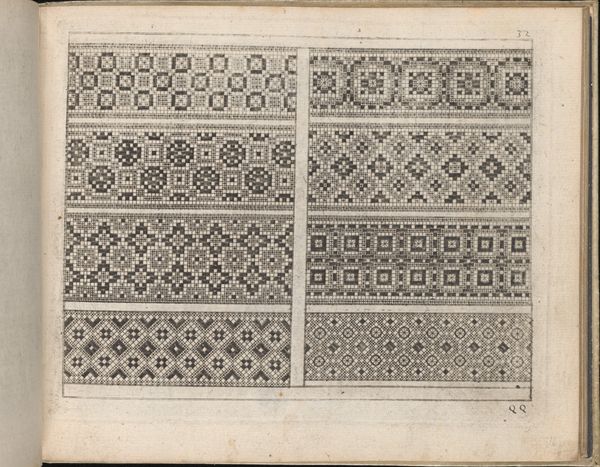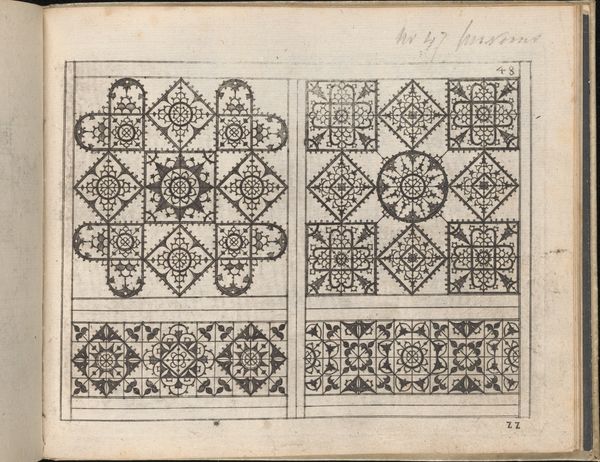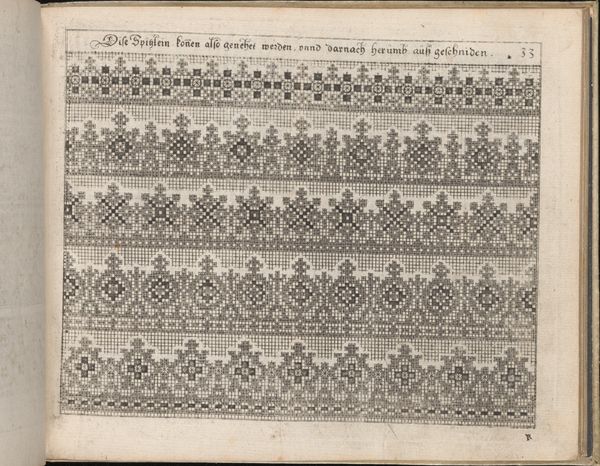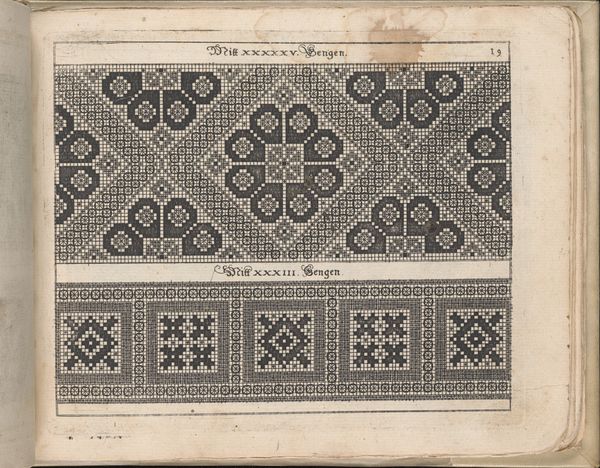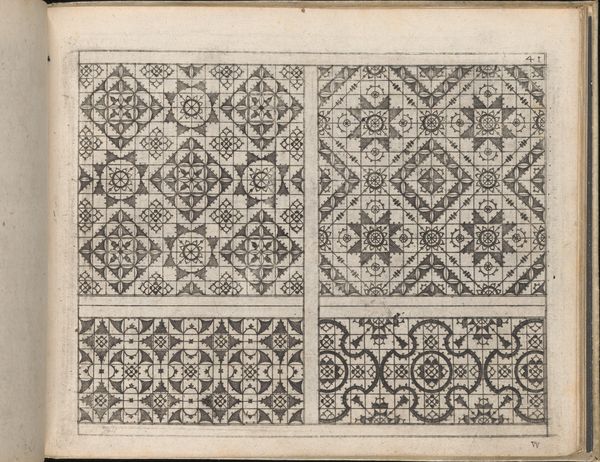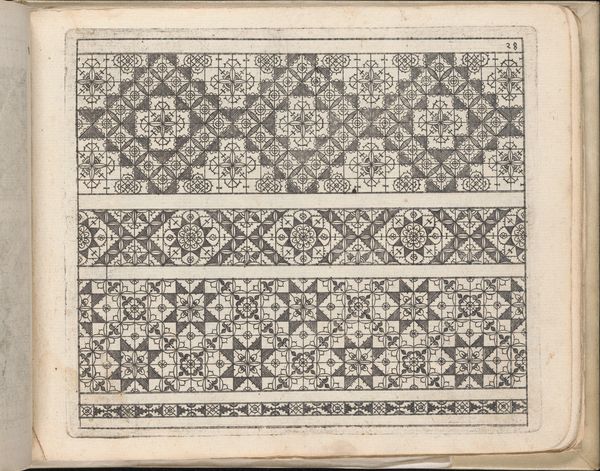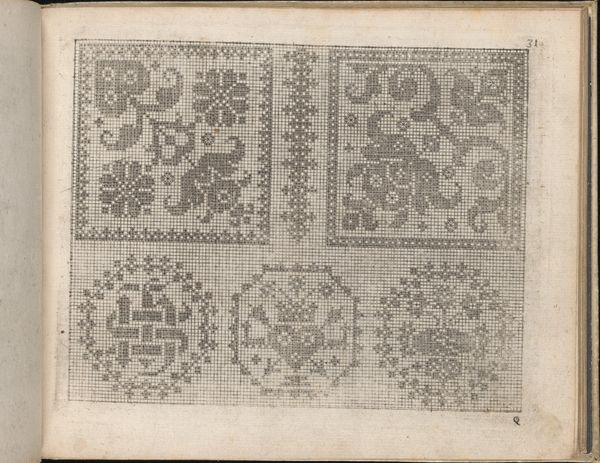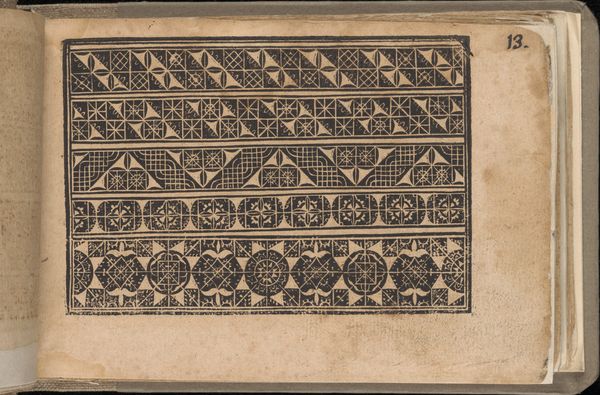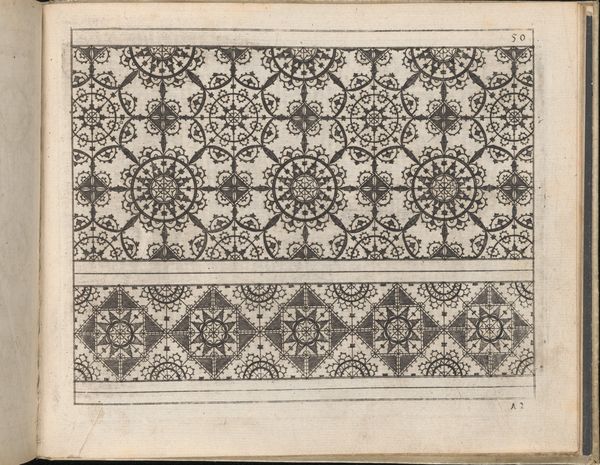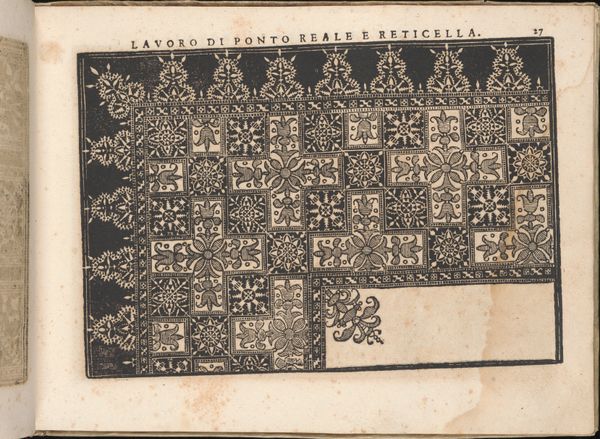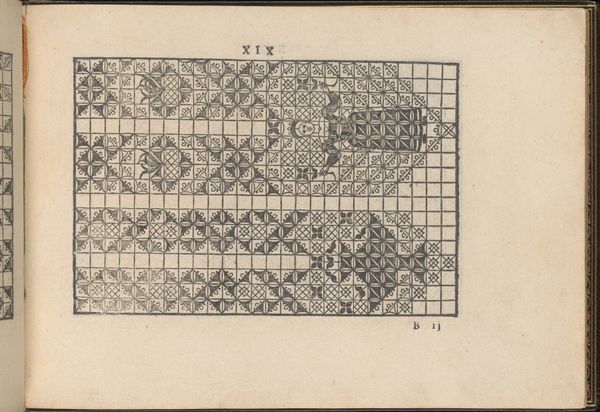
drawing, graphic-art, ornament, print, paper, engraving
#
drawing
#
graphic-art
#
aged paper
#
ornament
#
toned paper
#
medieval
#
ink paper printed
# print
#
book
#
old engraving style
#
sketch book
#
paper
#
11_renaissance
#
personal sketchbook
#
geometric
#
pen-ink sketch
#
men
#
line
#
pen work
#
sketchbook drawing
#
decorative-art
#
sketchbook art
#
engraving
Dimensions: Overall: 5 11/16 x 7 1/16 x 3/4 in. (14.5 x 18 x 1.9 cm)
Copyright: Public Domain
Curator: Here we have "Newes Modelbuch in Kupffer (Page 62r)", an engraving by Johann Sibmacher dating back to 1604. It's currently held at the Metropolitan Museum of Art. What are your initial thoughts? Editor: My first impression is how meticulous and controlled the patterns are. The fine lines and repetitive geometric forms almost feel hypnotic. There's an interesting juxtaposition of rigid structure and delicate ornament. Curator: Indeed. This piece is part of a model book, which were pattern books circulated widely during the Renaissance and Baroque periods. Think of it as a catalogue, used primarily by embroiderers, lace makers, and other artisans to replicate designs. Editor: So, it was less about high art and more about facilitating production within craft economies? Who would have been engaging with these patterns, and what kind of socio-economic function did they serve? Curator: Exactly. These weren’t necessarily considered "fine art" objects but vital resources within a thriving cottage industry system. Primarily women would use books like this, as textile production at the household level was the primary site for creating textiles. This form of printed material allowed a spread of imagery and style across broader audiences. Editor: The very materiality speaks volumes about access and distribution. It raises important questions about artistic authorship and ownership in the context of mass-produced imagery versus unique artwork. The grid structure seems key to facilitating reproduction. Curator: Precisely. It demonstrates an understanding of scalability and replication inherent in craft production. These patterns were a common visual language of the time. Editor: Seeing this also makes me think of how printed matter shifted social conventions and roles by standardizing aesthetics. Was there resistance, and were unique artistic perspectives impacted or overridden by their pervasiveness? Curator: Those are vital points. With the accessibility came standardization and perhaps marginalization for unique localized skills. There are fascinating studies to consider on the politics of design that these seemingly innocuous pattern books invite. Editor: It's fascinating to realize how much socio-economic data can be embedded in something that seems merely decorative at first glance. Curator: Agreed. And for me, studying pieces like this enriches our understanding of artistic creation during the Renaissance, helping dissolve that hard line we draw between fine art and the decorative arts.
Comments
No comments
Be the first to comment and join the conversation on the ultimate creative platform.
